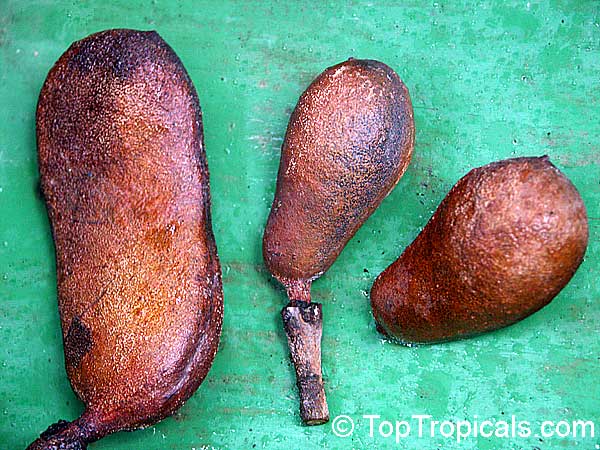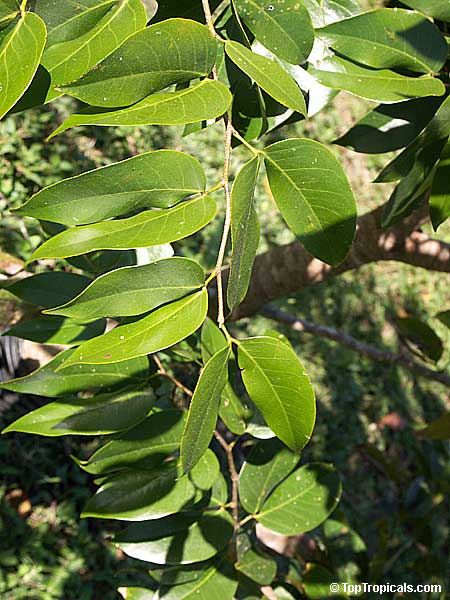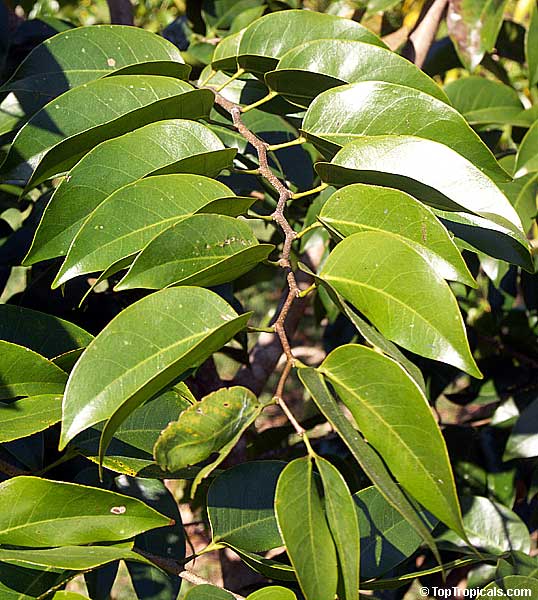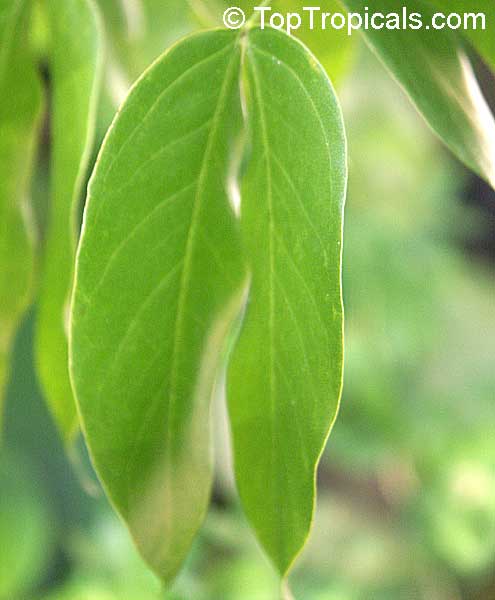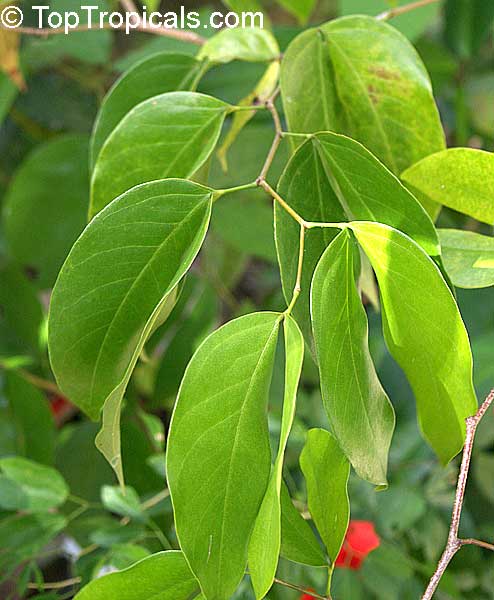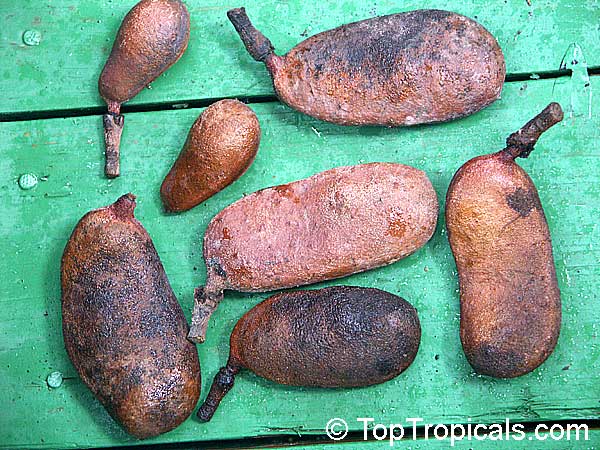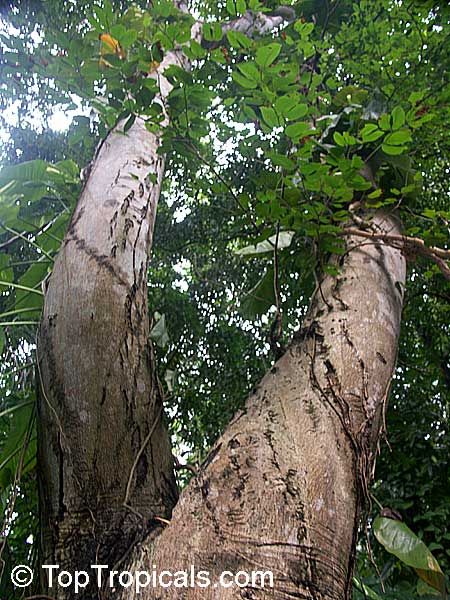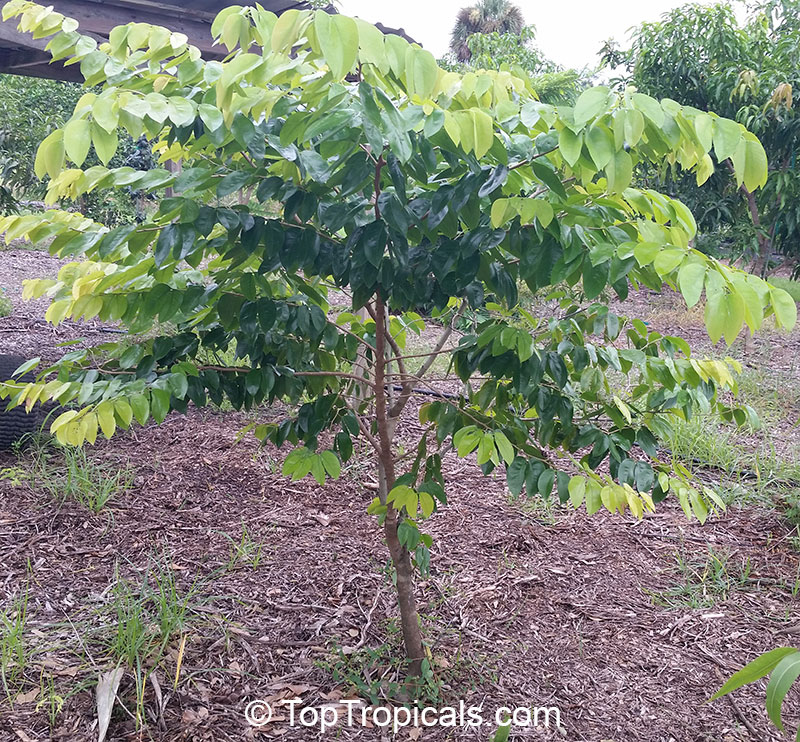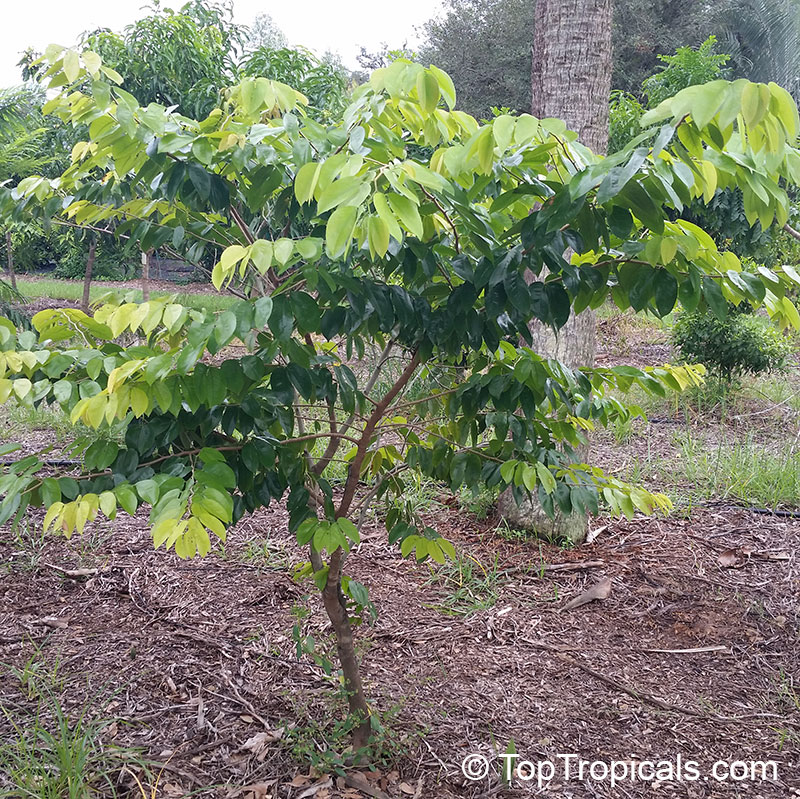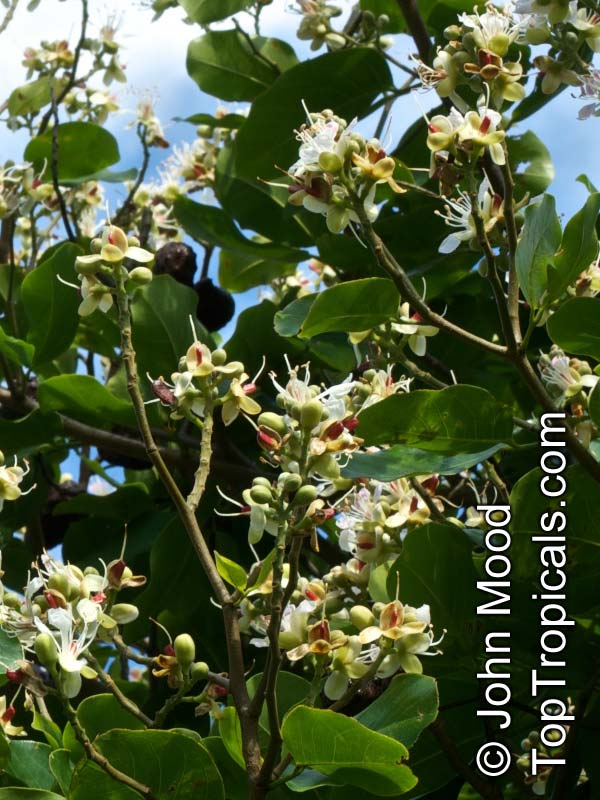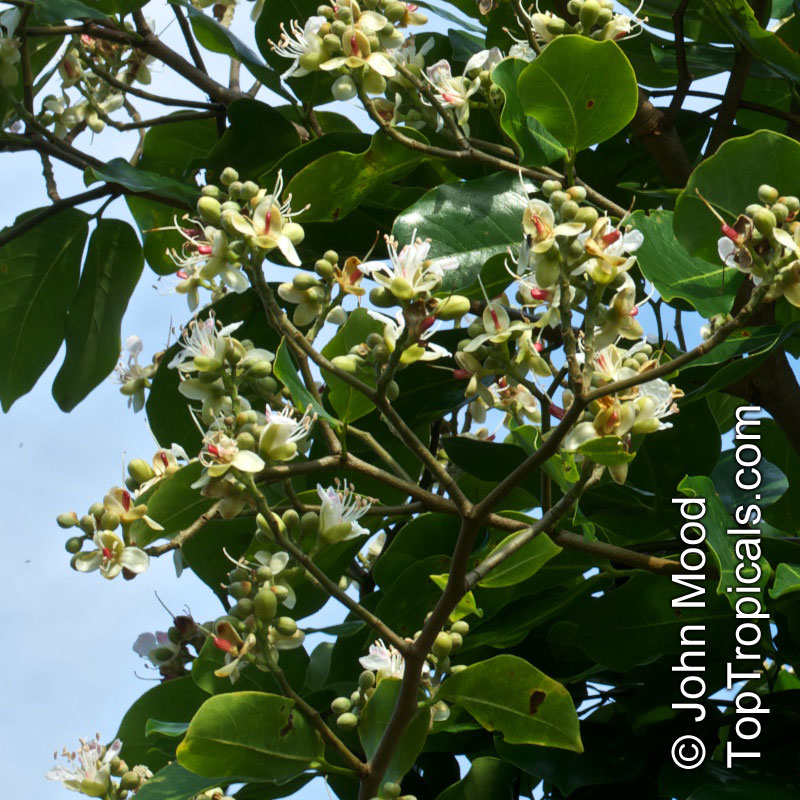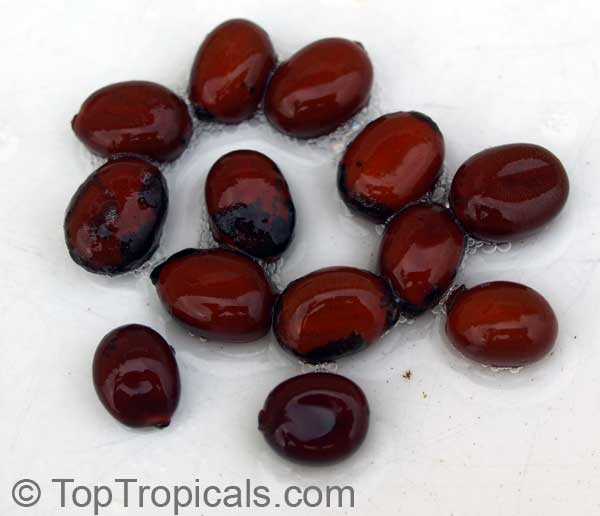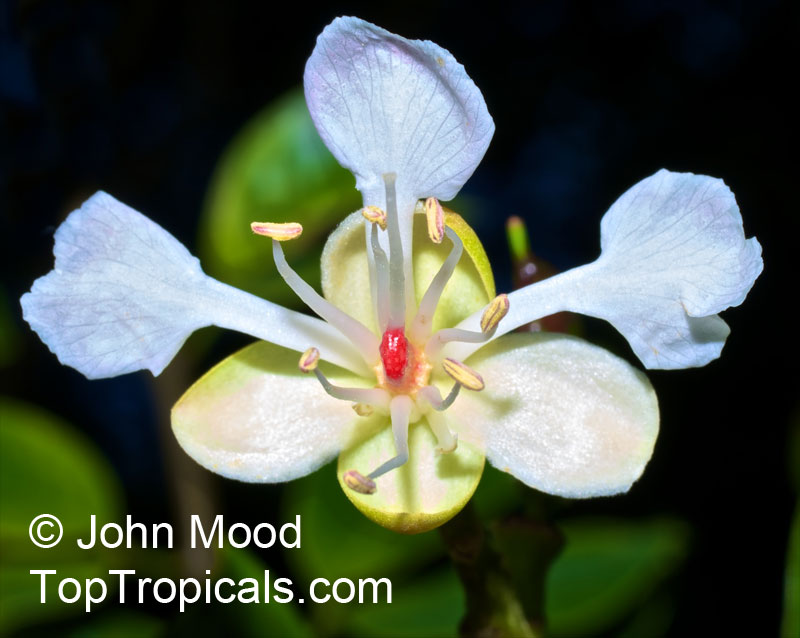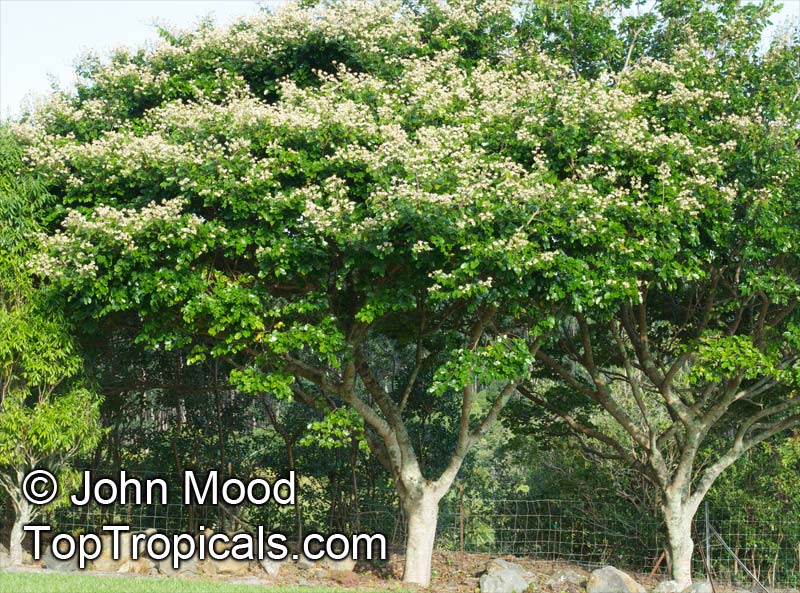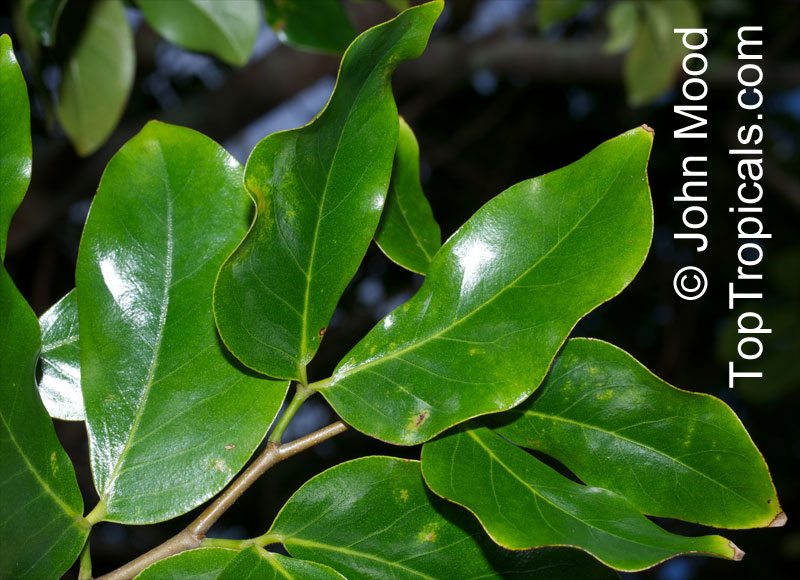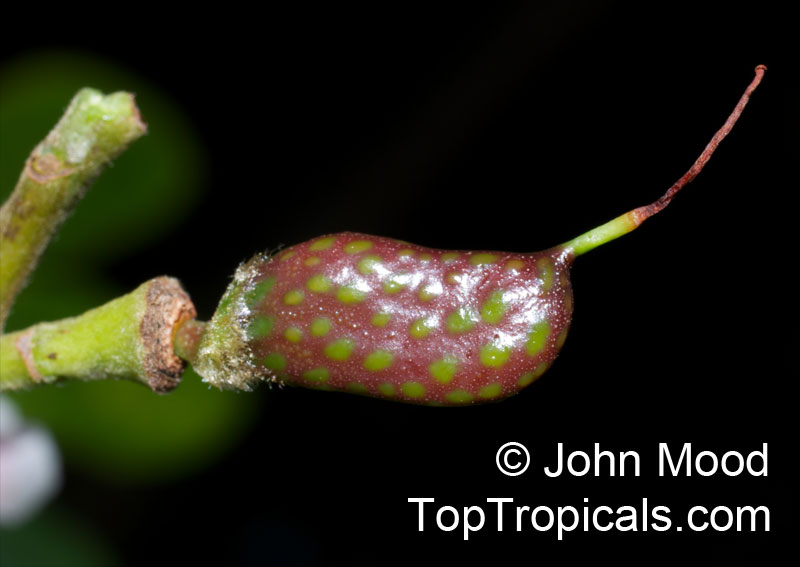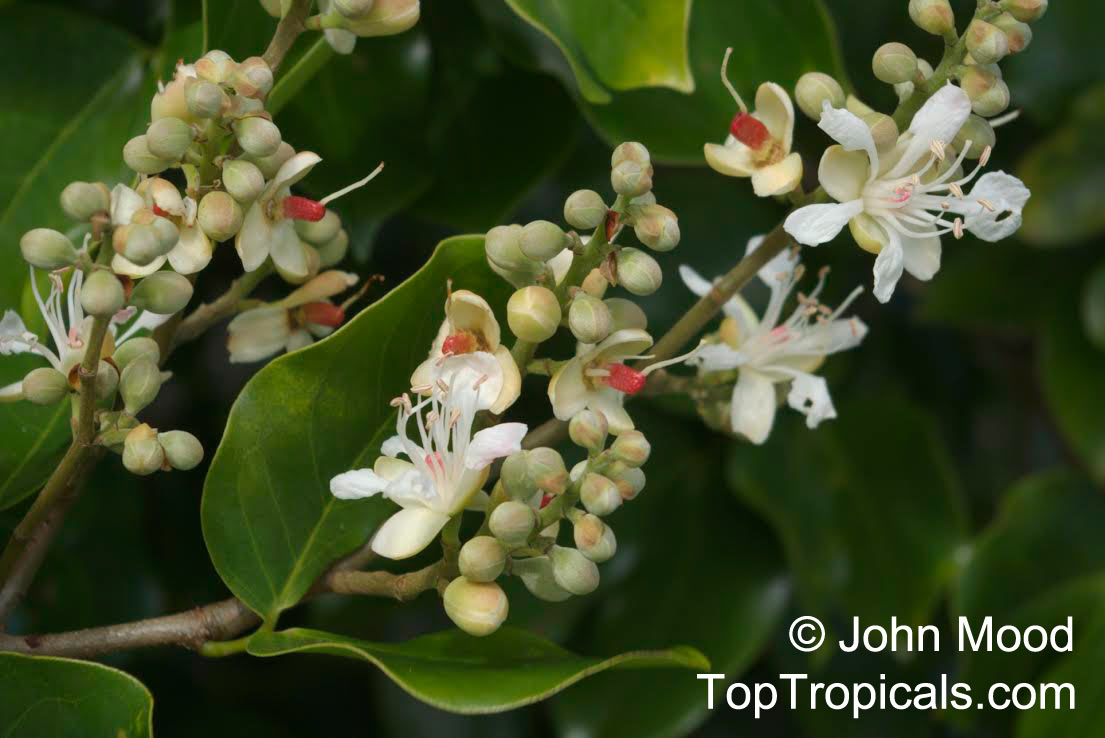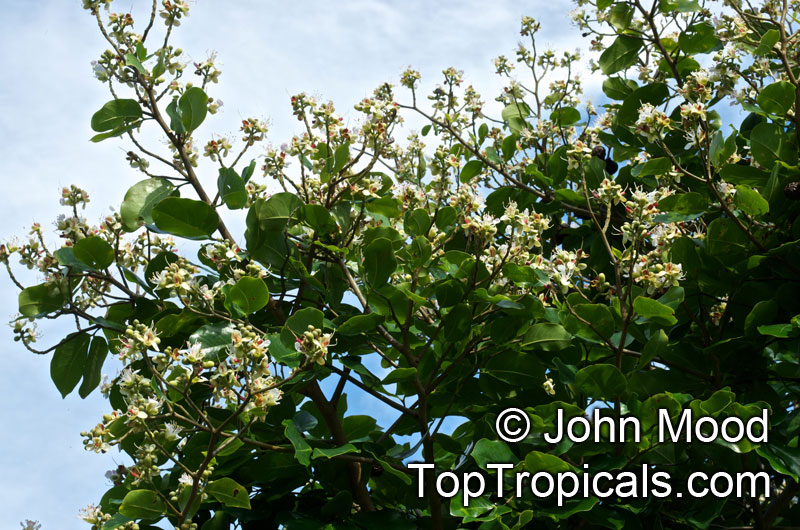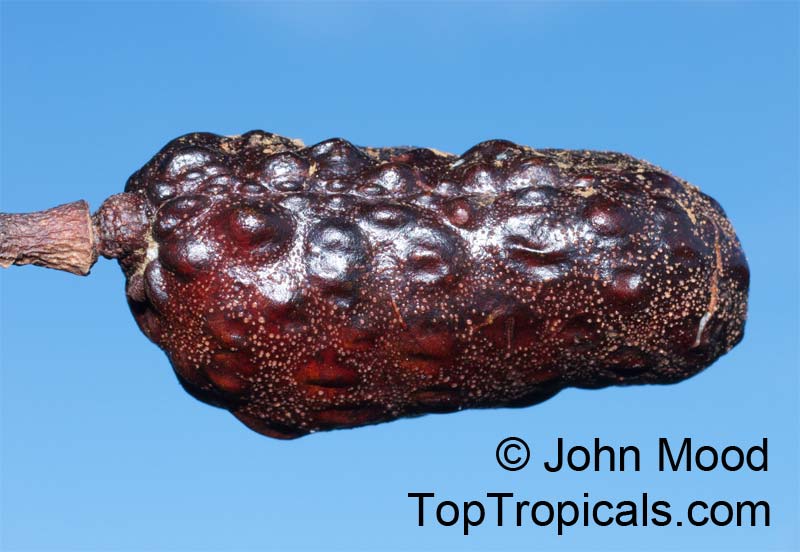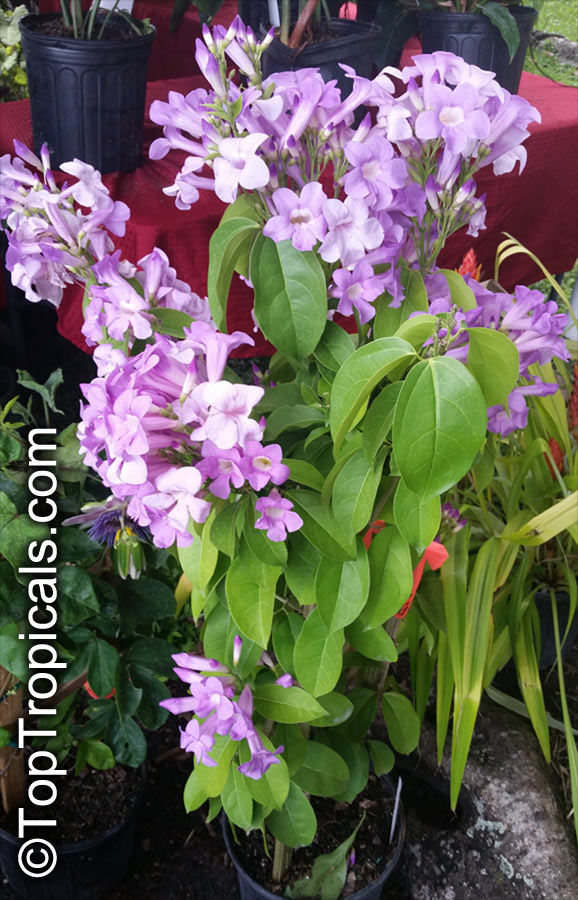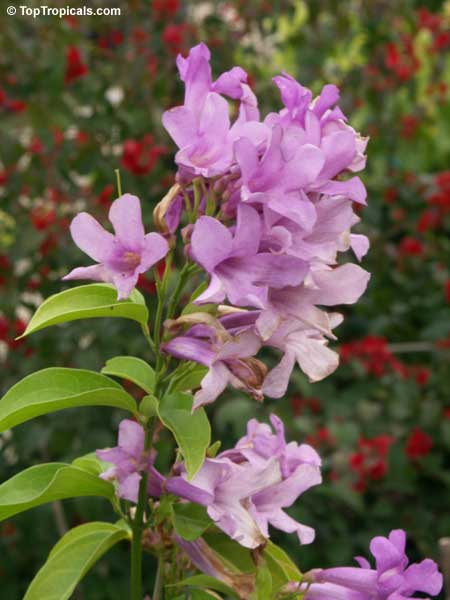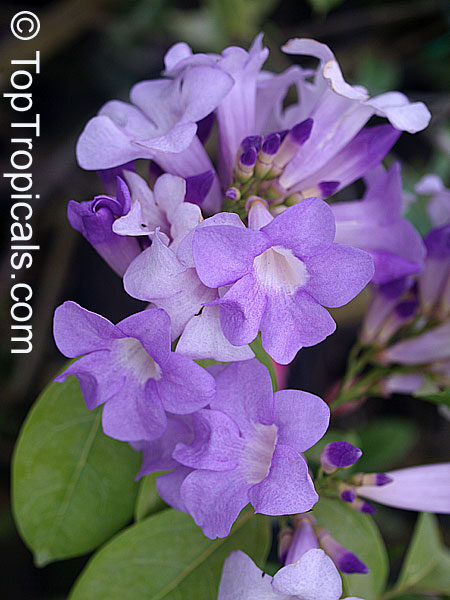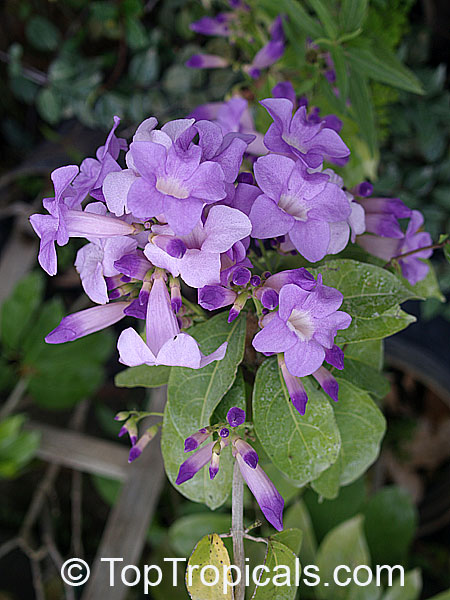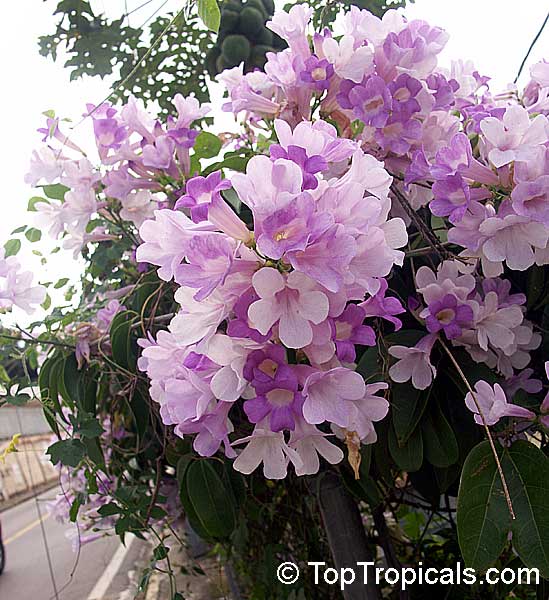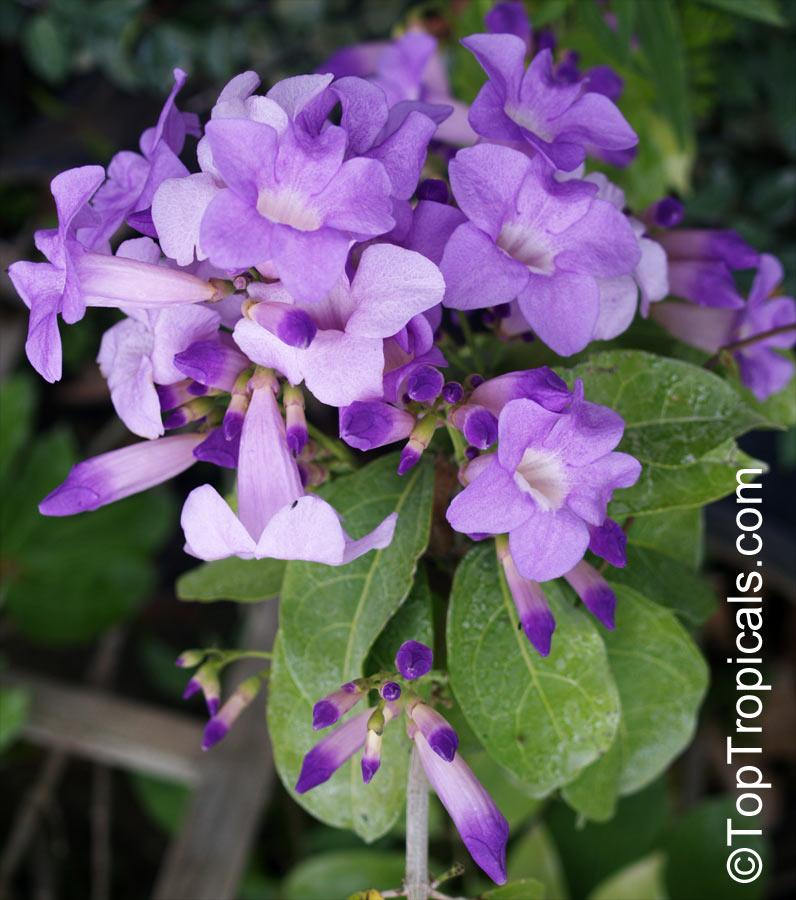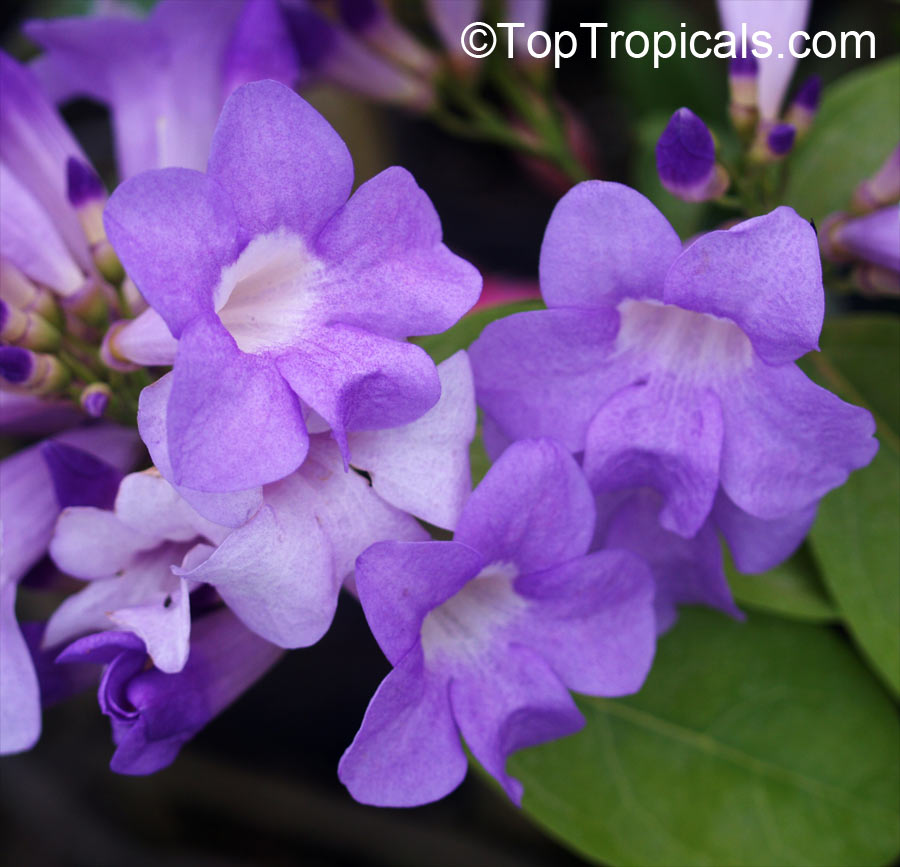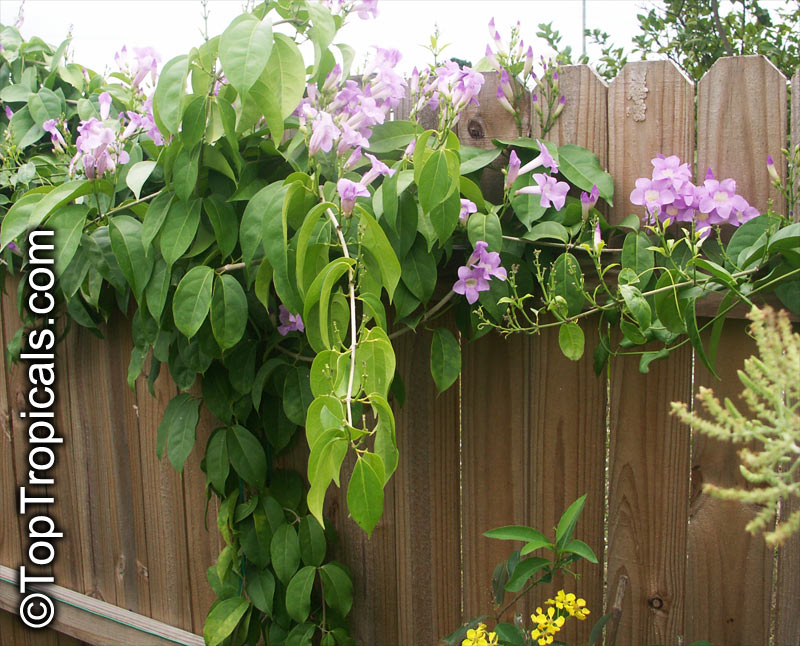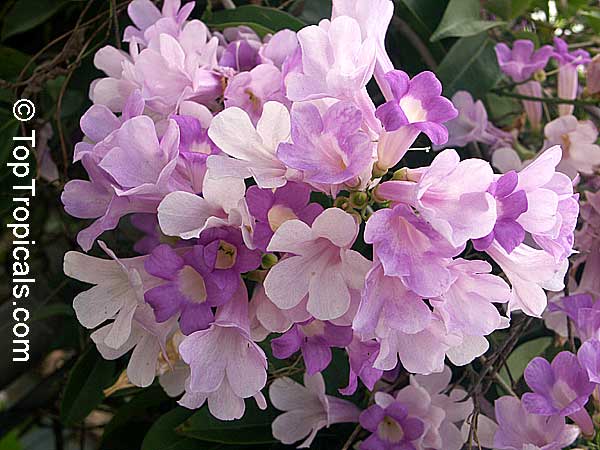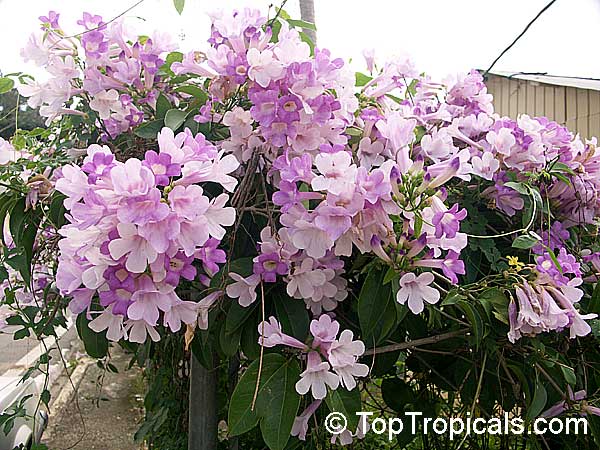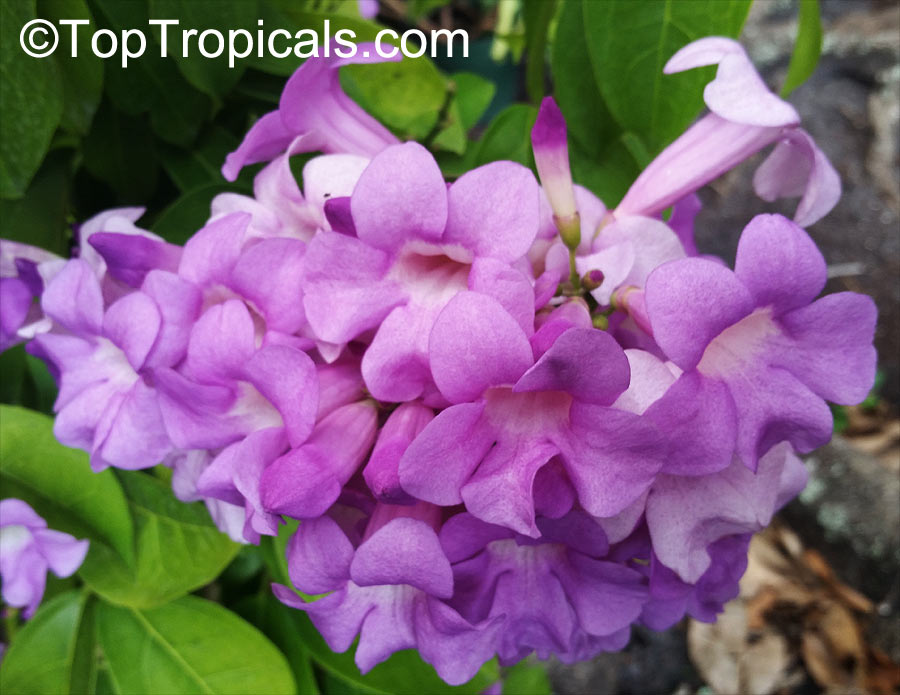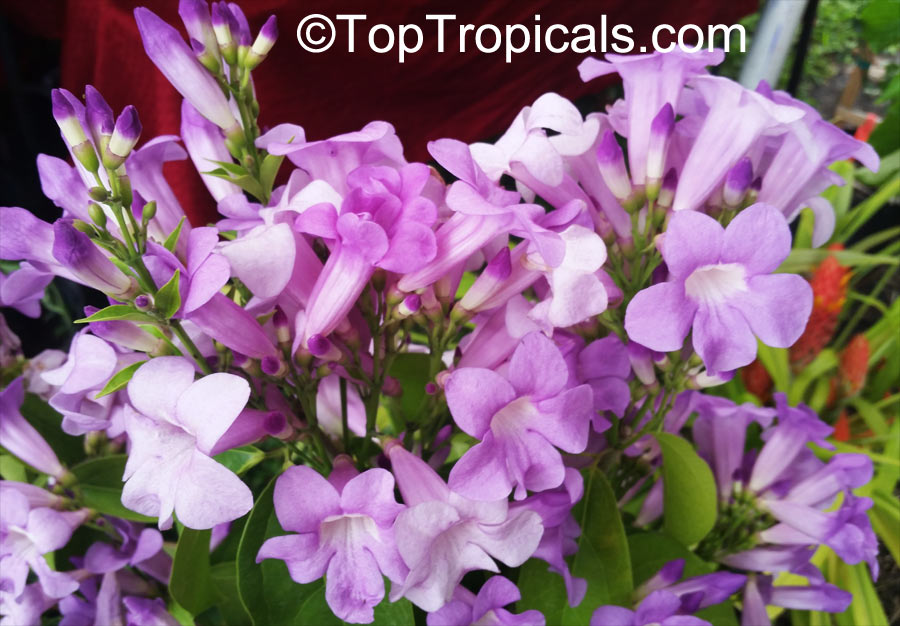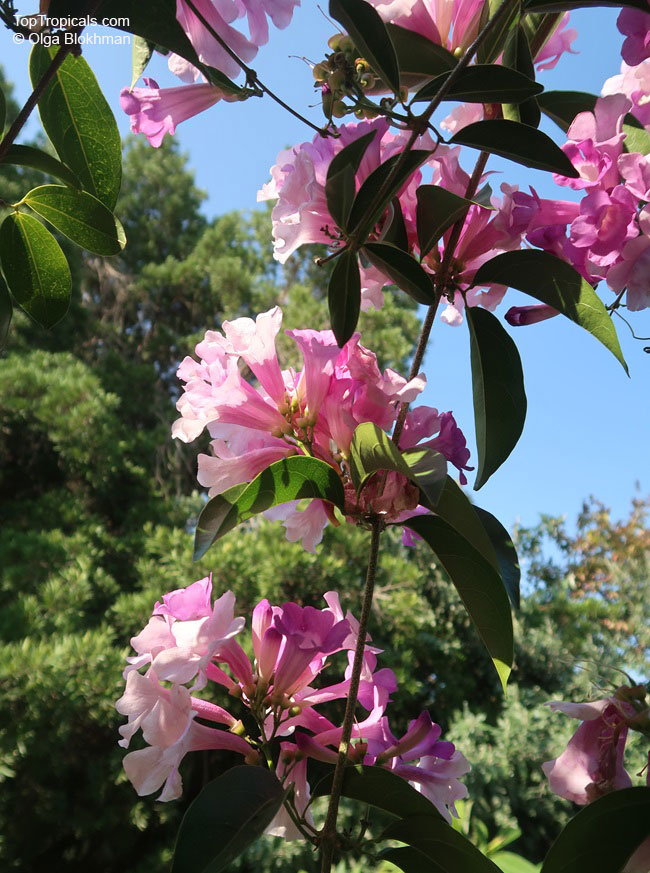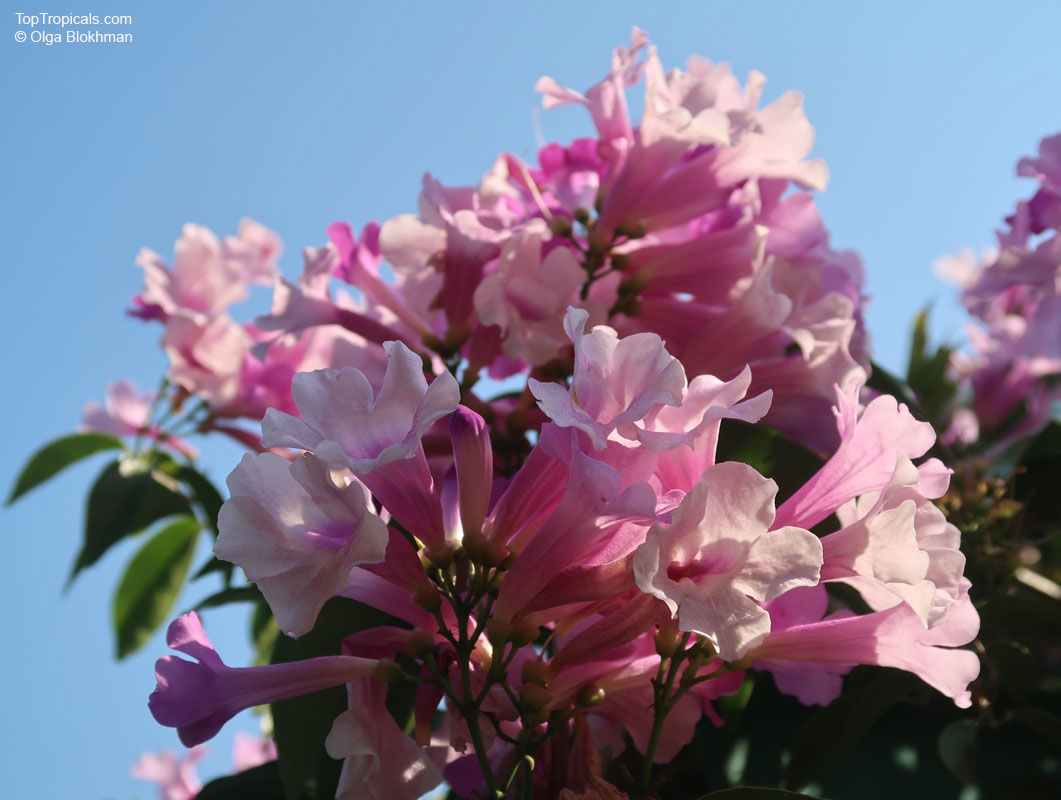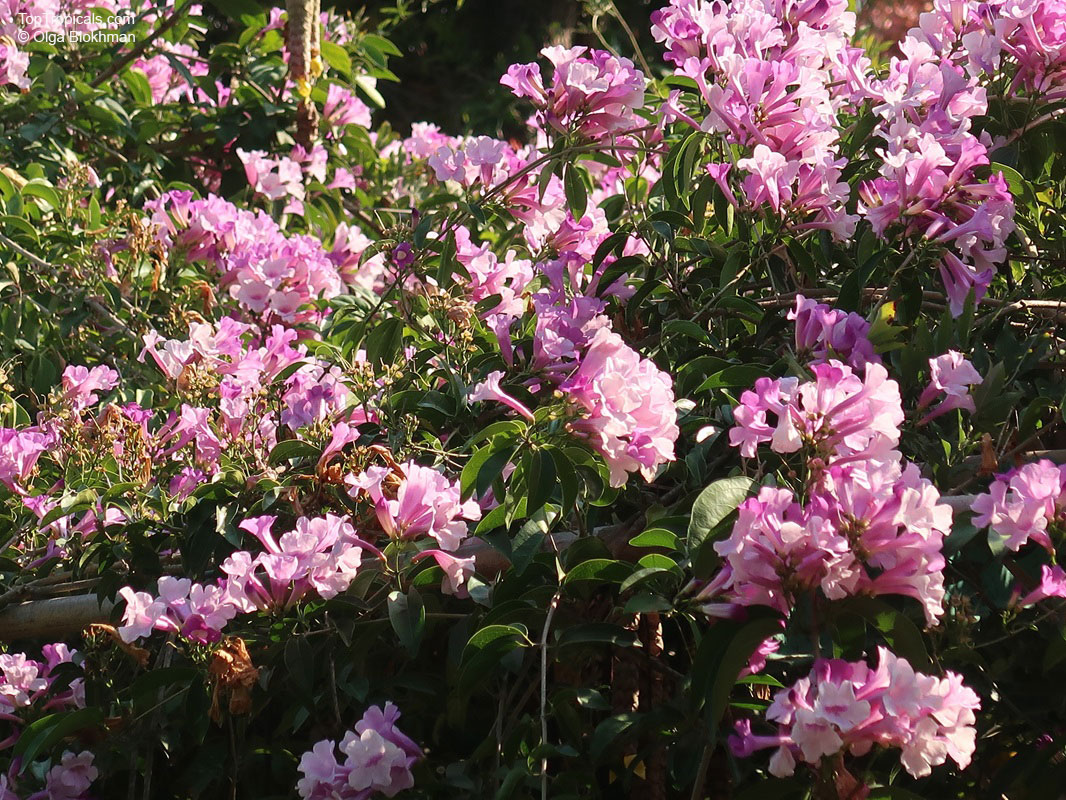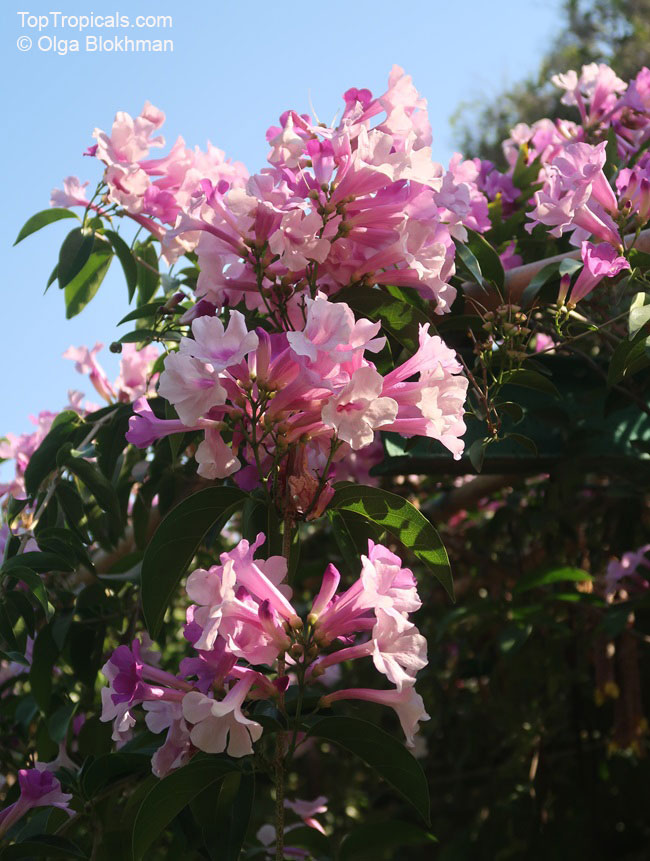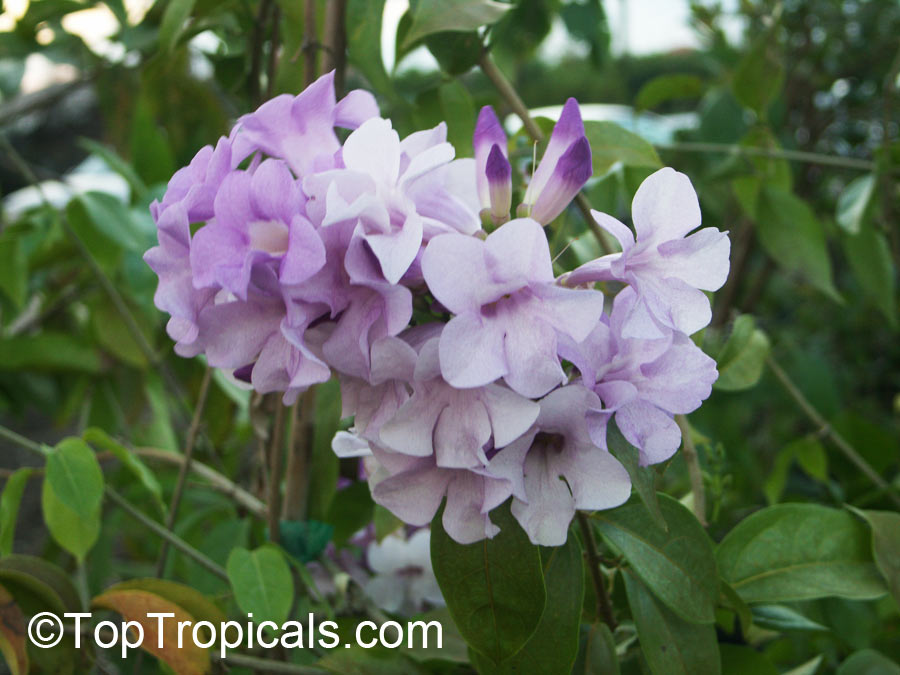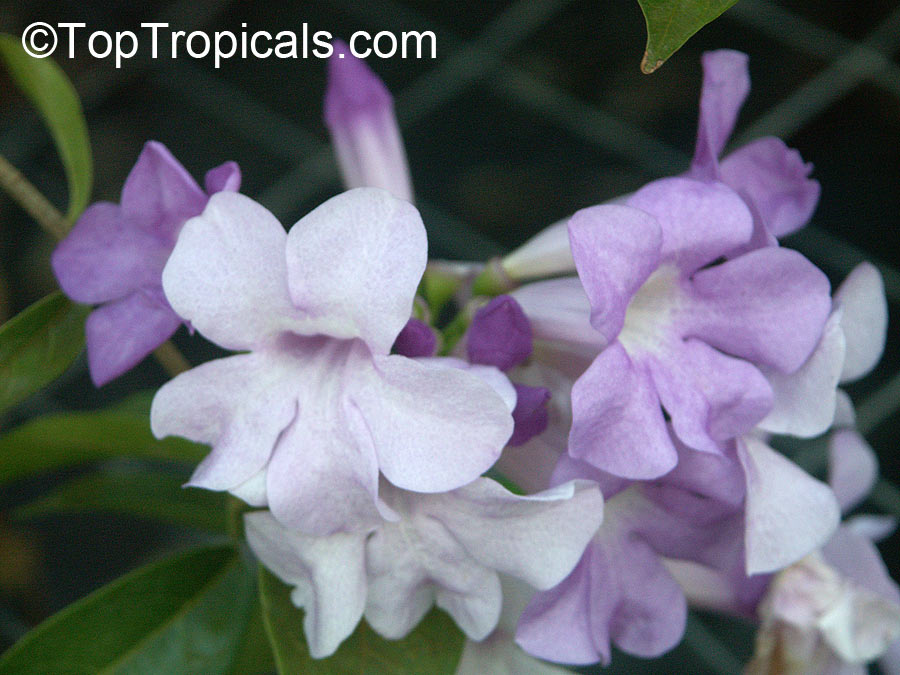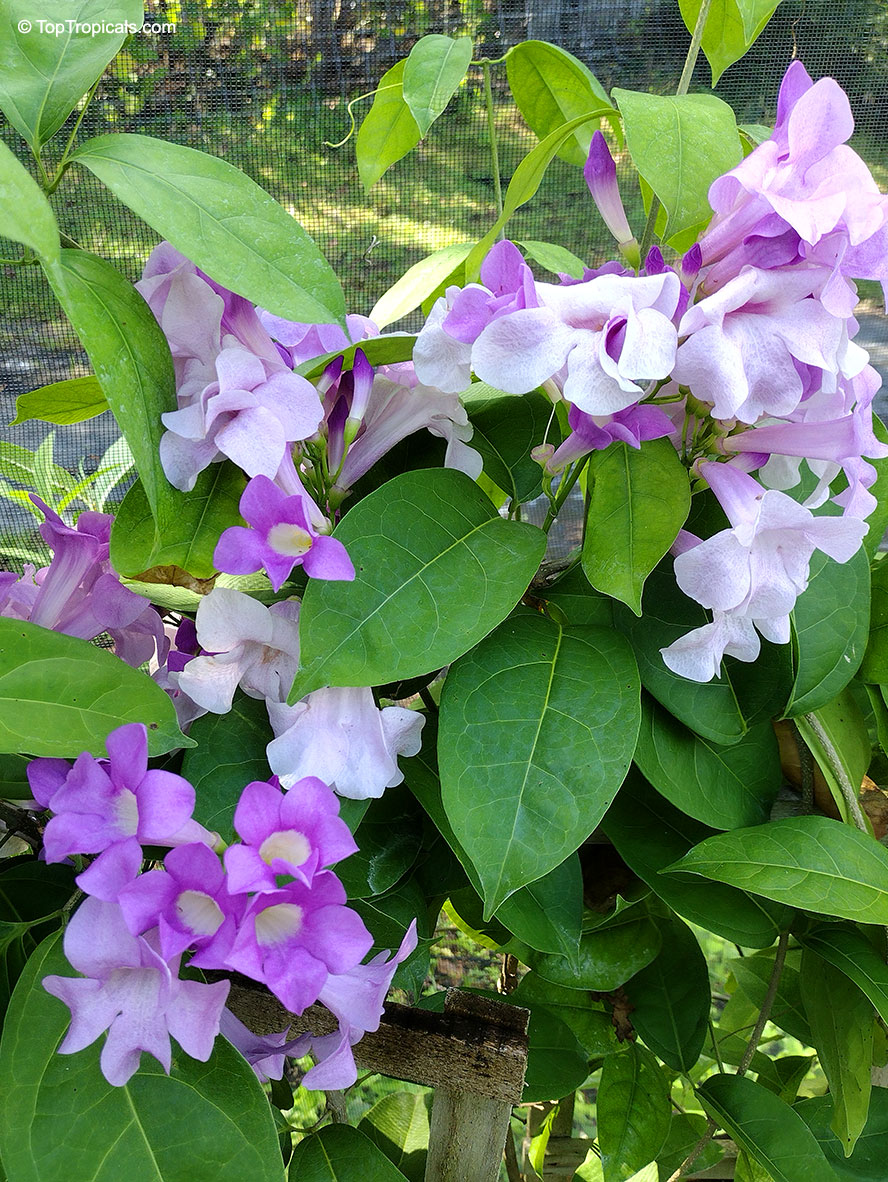Hymenaea - Plant Encyclopedia Results
Top Tropicals Plant Encyclopedia
| Number of plants found: 3 |
Botanical names: Hymenaea courbaril, Inga megacarpa, Hymenaea animifera
Common names: Stinking Toe, Jatoba, Coapinole, Courbaril
Family: Fabaceae
Subfamily: Caesalpinioideae
Origin: Central and South America





Hymenaea courbaril, commonly known as Stinking Toe, is a small deciduous tree that typically grows between 10 to 20 feet in height and spread. The tree has a wide and spreading canopy, and it is frost hardy to at least the mid 30s F for a short time. However, when grown in pots in cold locations, they should be brought inside during cold months and put in a sunny and warm spot.
Stinking Toe thrives in full sun. For optimal growth, the tree prefers regular water, although some drought tolerance is possible. This plant can be grown in USDA Zone 9-11.
The plant produces fruit when mature. The fruit is eagerly sought out by wildlife and is also edible by humans. It has many health benefits attributed to it, such as reduced inflammation and improved digestion. A mature Stinking Toe can produce between 20 and 40 fruits per season.
The plant derives its name "Stinking Toe" because its seedpods look like big, fat toes and are said to smell like smelly feet or toes. Despite the name, the fruit is delicious, and the pulp of Stinking Toe is sweet-tasting and can be eaten fresh or made into a beverage. The plant also has many uses in folk medicine, ranging from alleviating headaches to treating gout.
The white flowers are pollinated by bats. Moreover, the plant produces usable copal resins, mostly underground and at the base of the tree. The orange sticky gum of the plant converts to amber, but this process takes millions of years. As a result, this forms a hard polymer that is resistant to natural decay processes.
Botanical name: Hymenaea verrucosa
Common names: Copalier, Gum Copal
Family: Fabaceae
Subfamily: Caesalpinioideae
Origin: East Africa







Hymenaea verrucosa is the source of the valuable Zanzibar copal.
Botanical names: Mansoa alliacea, Pachyptera hymenaea, Pseudocalymma alliacea, Cydista aequinoctialis
Common names: Garlic Vine, Cipo de Alho, Equinox Vine, Cydista
Family: Bignoniaceae
Origin: Tropical America










This spectacular bloomer from is originated from South America, from Mexico to Brazil, and also known as Ajos Sacha ("false garlic" in Spanish). It grows into a semi-woody vine that attaches itself around the trunk of a large tree for support as it climbs skywards to reach for sunlight. The terminal leaflet of this plant is often modified into a tendril that helps the vine to cling onto a support. The two special features makes this plant pretty unique. First, the blooms. Deep lavender flowers with white throat are fading to a paler lavender as they mature. You will see 3 different color of flowers at the same time on the plant. The vine blooms heavily twice a year: in Fall-Winter, and in Spring, although it may also have some flowers on and off throughout the year. Secondly, the small of the leaves makes it a conversation piece: crushed leaves smell like garlic, although of course the plant is not related to the common edible onion or garlic at all. This plant is even used as substitute for garlic in food. The entire plant - roots, stems and leaves, is used medicinally: to reduce fevers, treat colds, throat, respiratory ailments, arthritic and rheumatic pain. Colds, flu and fever are treated with garlic vine, and this herb is often used to address "smoker's cough." Garlic vine is also effective as a mosquito repellent. The plant is said to help get rid of bad luck and is a favorite with hunters. Some Amazon natives offer their dogs a brew of this botanical to ensure success during the hunt. It is one of the most rewarding flowering vines that you can grow, unless you are a vampire!
Like many other flowering vines, the garlic vine should not be overly pruned as flower buds appear on new growth. Many gardeners make this mistake by pruning away the vines to keep new growth in check and as a result, plants refuse to produce flowers. It is a vine with a moderate growth rate and one need not worry that is will become an unruly resident in the garden. It can be grown in containers and should be trimmed after the flowers are gone. Great for chain link fences (or any fence), or a large trellis. Avoid freezing temperatures.
Read Article about Garlic vine.
Watch video: Garlic vine keeps away the vampires!.
Recommended Fertilizer: SUNSHINE Megaflor - Bloom Nutrition Booster
Use link to repeat this search:
https://toptropicals.com/cgi-bin/garden_catalog/cat.cgi?find=Hymenaea&search_op=and&keyword_op=and&language=e&number=10
&no_change_lang=1&user=tt&sale=1&first=0
